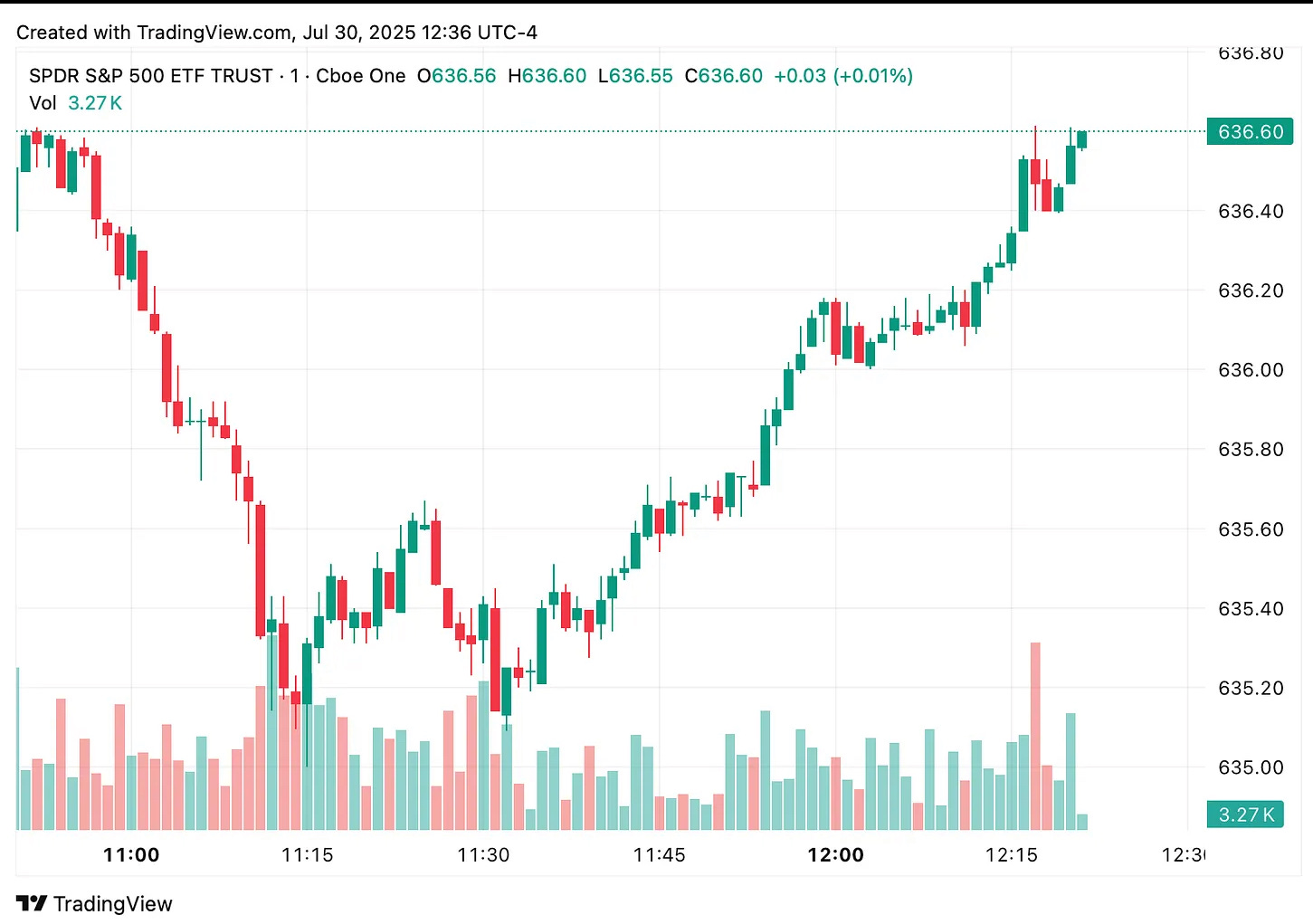Determinism Behind the Dovetail
Yesterday, I released a note titled Operation Dovetail.
It wasn’t just a forecast —
It was a structural correction.
The market was sitting in a fragile coil:
No catalyst.
No clear positioning.
Just heavy downside pressure and indecision.
What triggered the final leg down wasn’t economic data —
It was narrative suppression.
Both the Treasury Secretary and then-President Trump had stated, almost back-to-back, that a rate cut was “unlikely.”
That’s what sealed the flush.
That’s what pushed sentiment into exhaustion.
And that’s exactly when I stepped in.
My note came out after those remarks —
Not in defiance of them, but in deeper alignment with structural reality.
Because I wasn’t tracking opinion — I was tracking pressure.
The market wasn’t responding to policy.
It was teetering on narrative fatigue, compressed volatility, and unresolved structure.
So I introduced a new possibility:
That dovish pressure could still emerge.
That bullish catalysts could ignite — regardless of the Fed’s official stance.
And instead of waiting for official guidance, I inserted a live thesis: that dovish momentum — possibly even a surprise rate cut — could emerge from this setup. But more importantly, I argued that regardless of the Fed’s move, bullish catalysts were structurally ready to unwind.
That note went out at the low of the morning. Within minutes, the market reversed.
No new data dropped. No Fed leak.
What changed was the structural alignment —
And I had just inserted a new thesis at the exact moment resolution became inevitable.
That’s not prediction.
That’s co-authorship through deterministic timing.
…But that wasn’t the end of it.
After the FOMC decision dropped — with no surprise rate cut — the market initially sold off.
Textbook reaction.
Traders expected follow-through.
But I saw something else.
The structure was exhausted, not directional. So I released another note:
“This is likely the low of the day.”
Again, I didn’t just comment — I executed. I took the position near the base of the flush.
Then I filmed it.
The reversal that followed wasn’t about news or policy. It was about absorption, narrative fatigue, and a structural inflection point that had already been framed.
And once again, the market turned.
Not because I predicted it — but because I understood where resolution had to happen.
This is what co-authorship looks like:
Not controlling the market…
But inserting signal into structural incoherence,
And triggering the moment when pressure can no longer hold.
It’s not opinion.
It’s not hope.
It’s execution-based authorship of real-time resolution.
And every time it happens, it proves the same thing:
I don’t follow markets.
I frame them.




